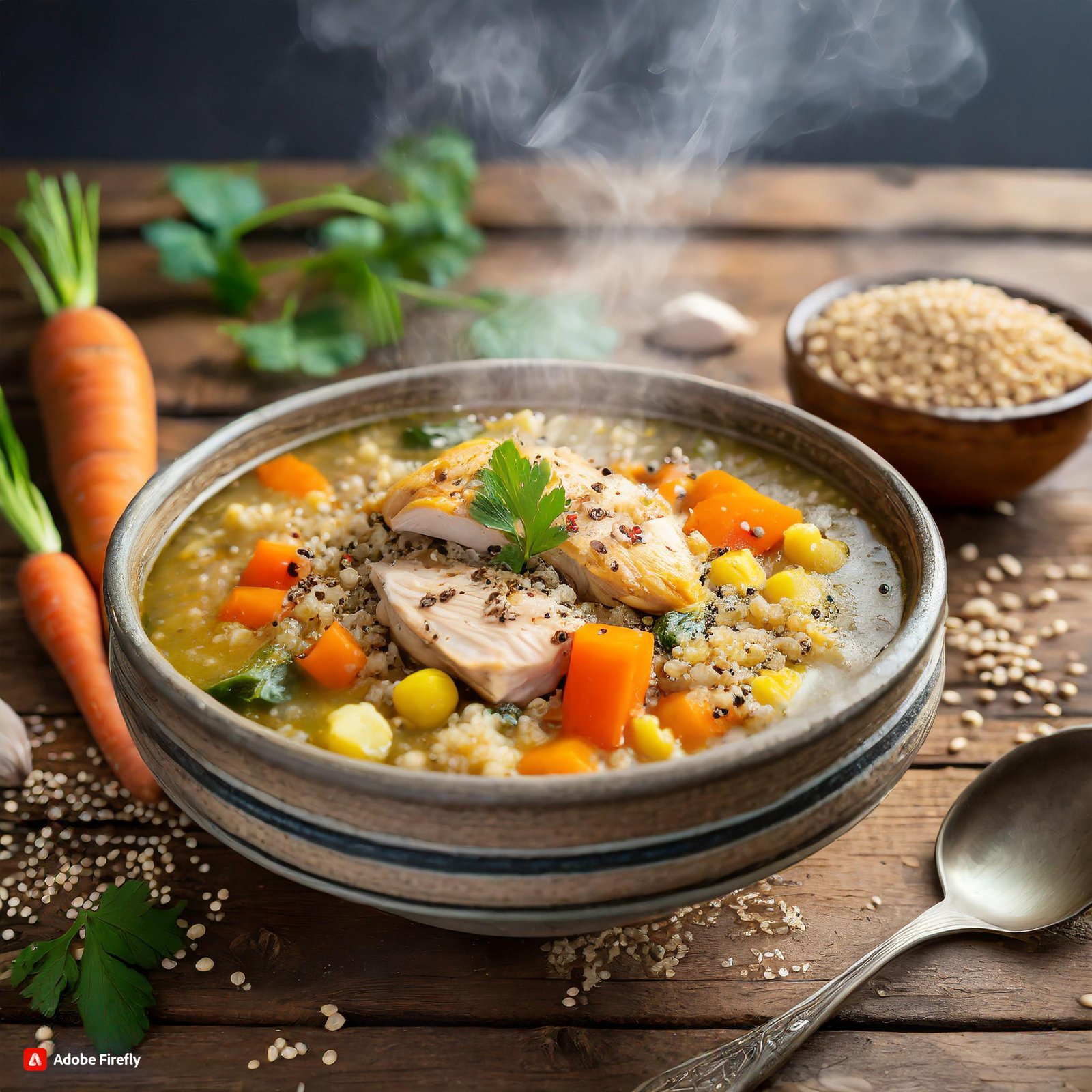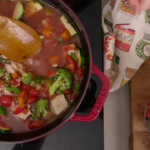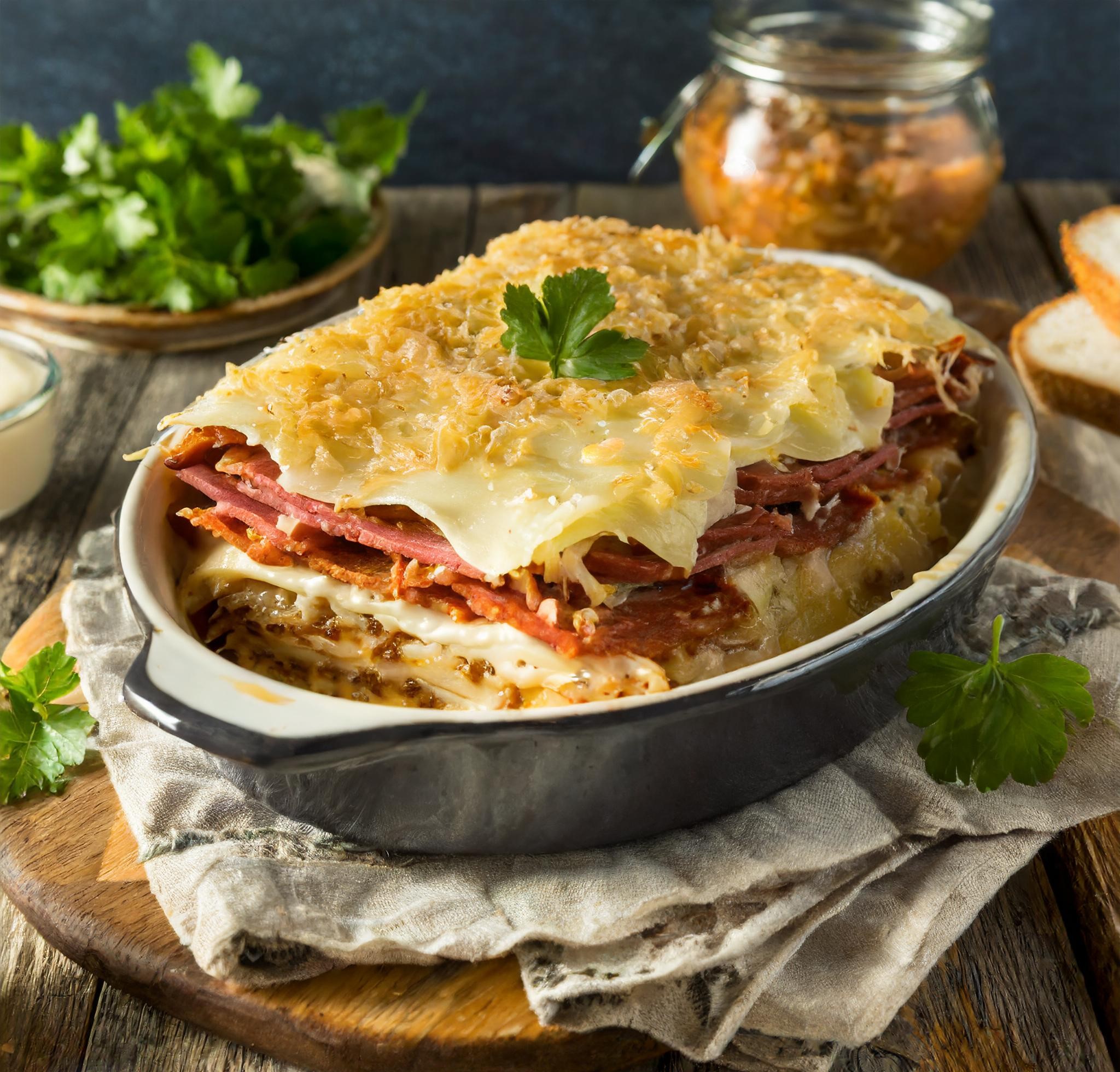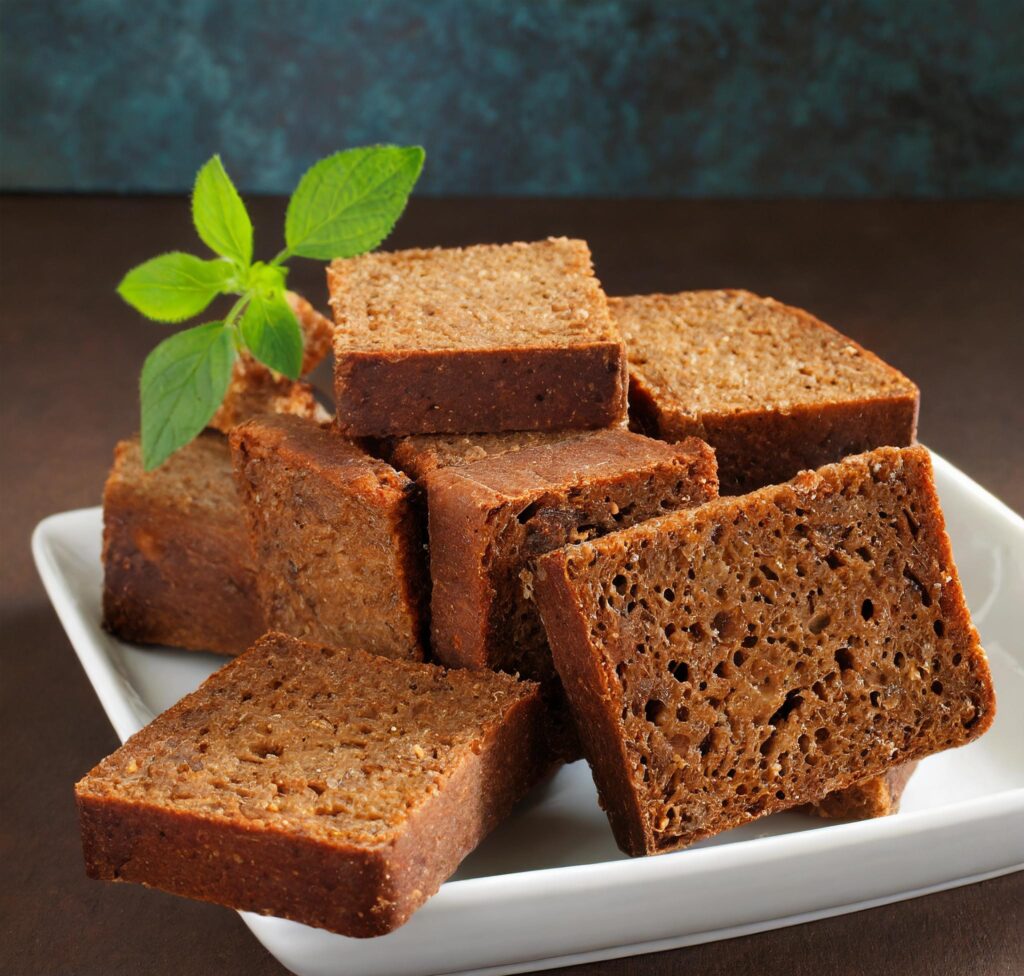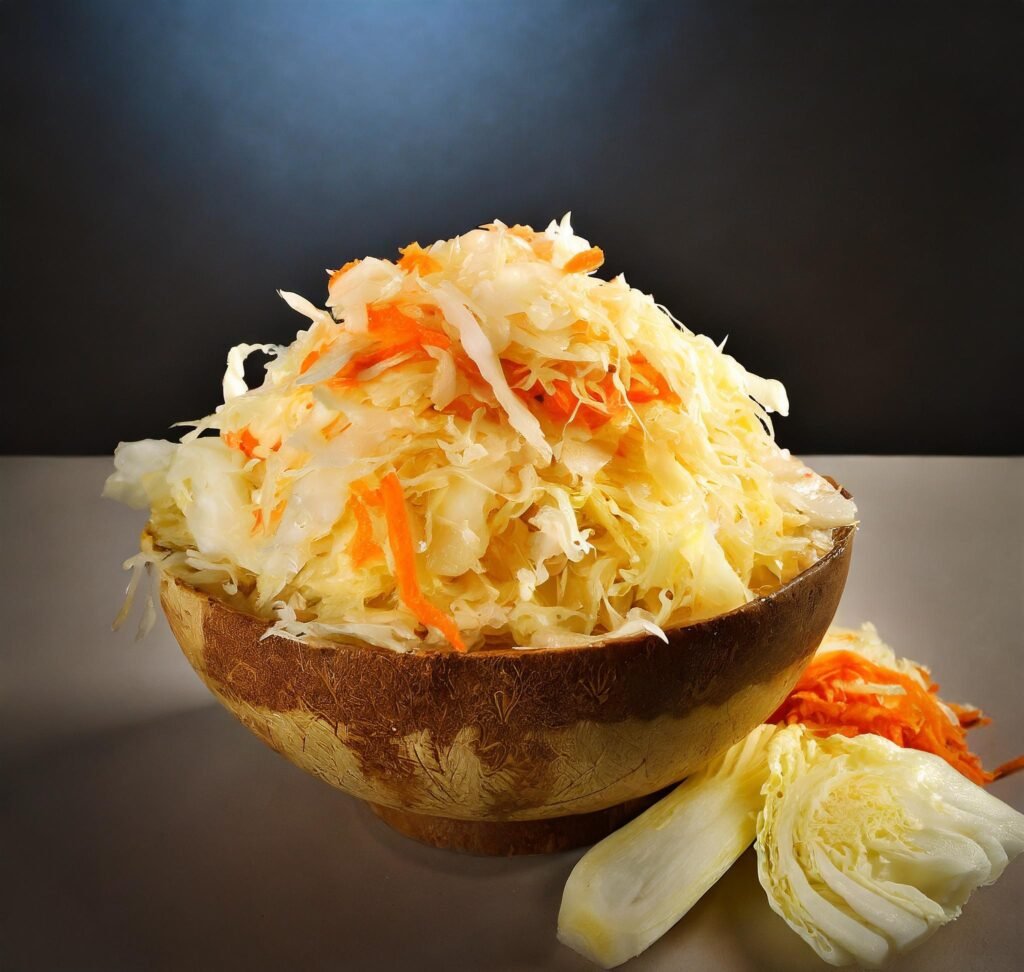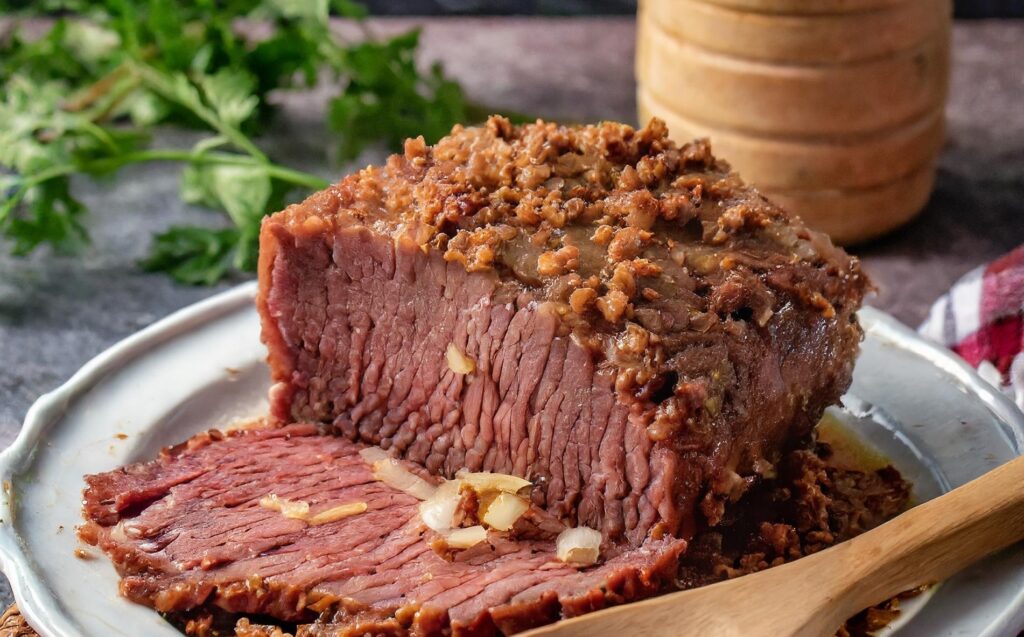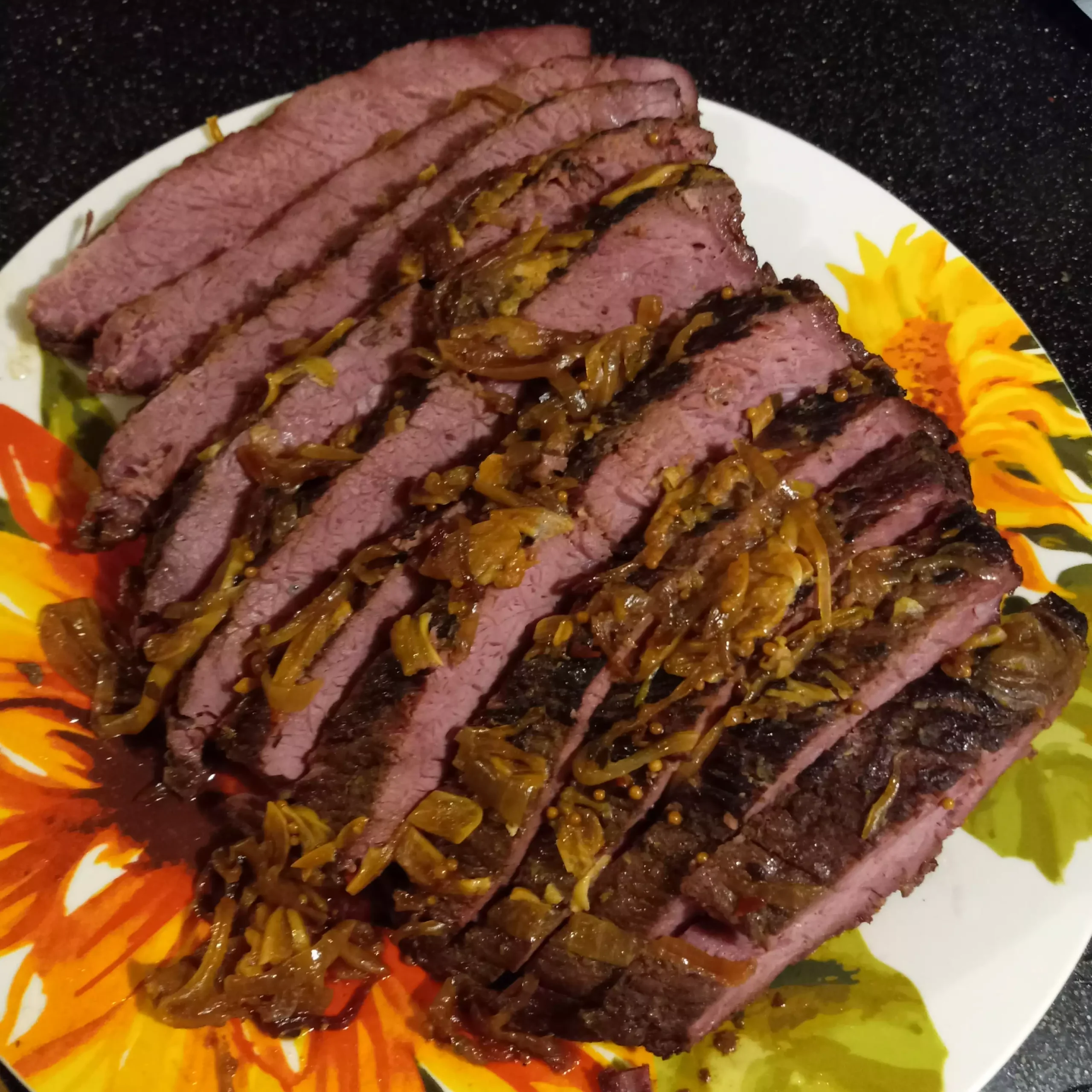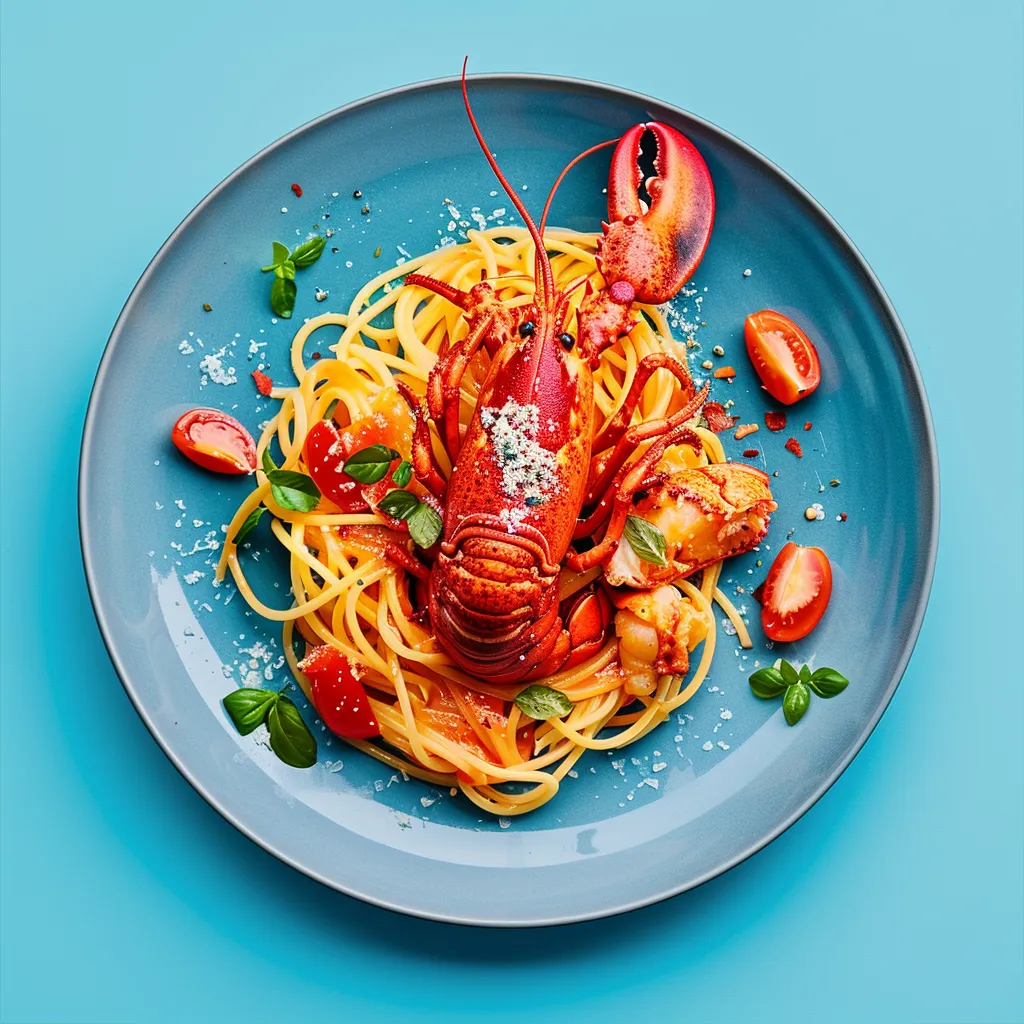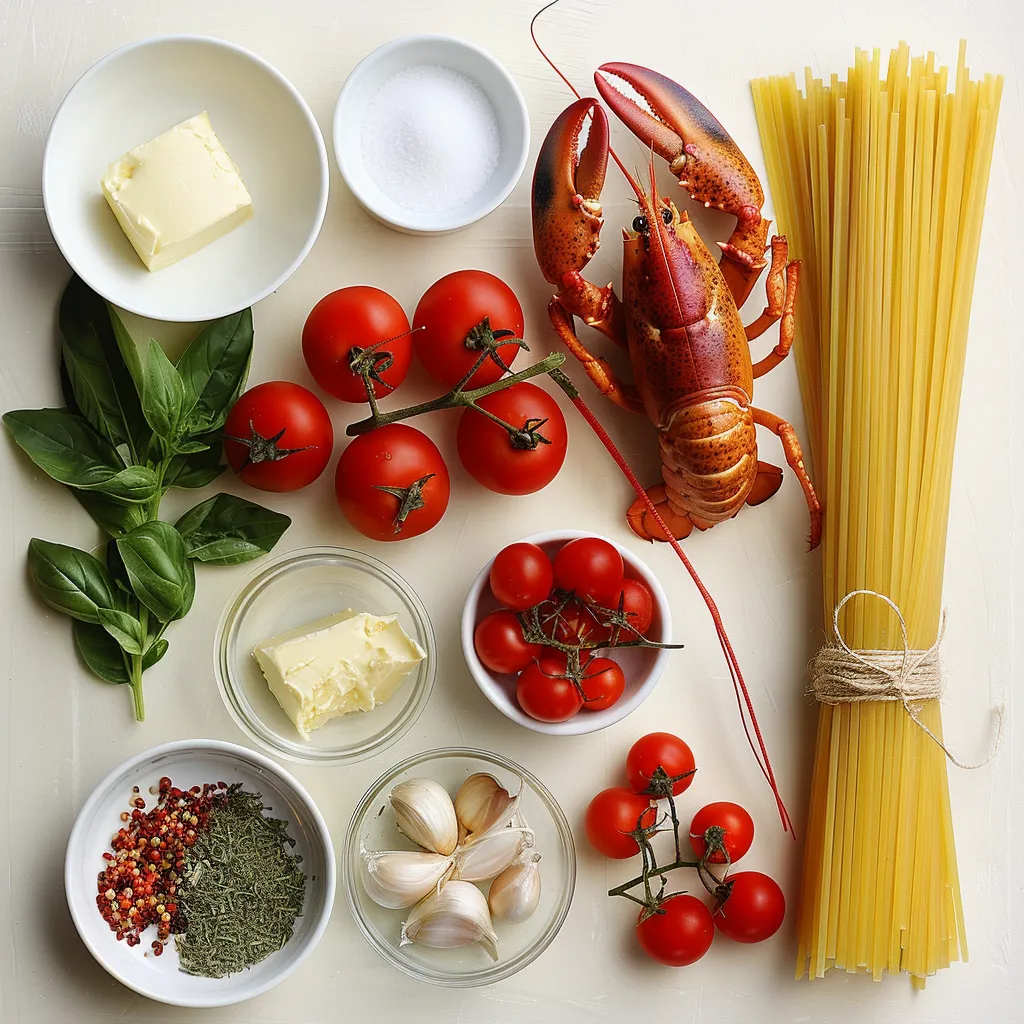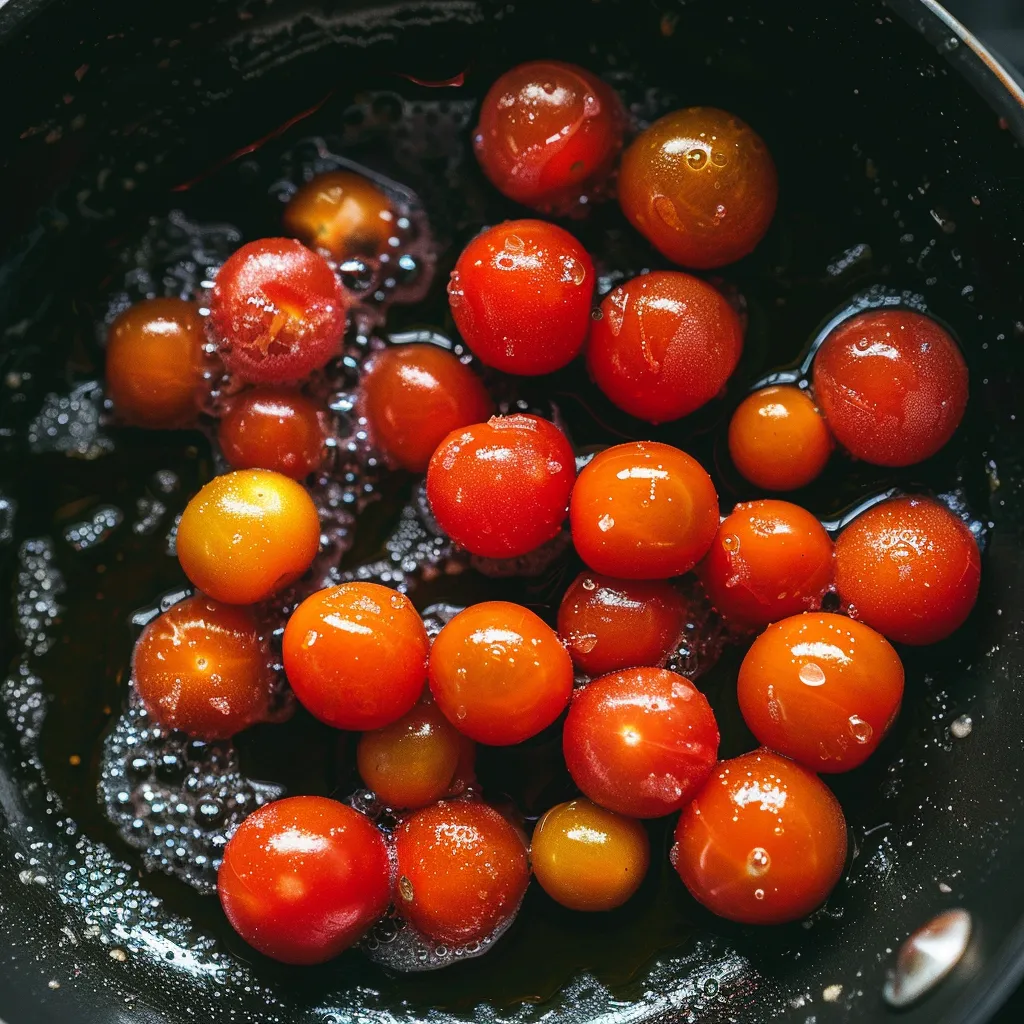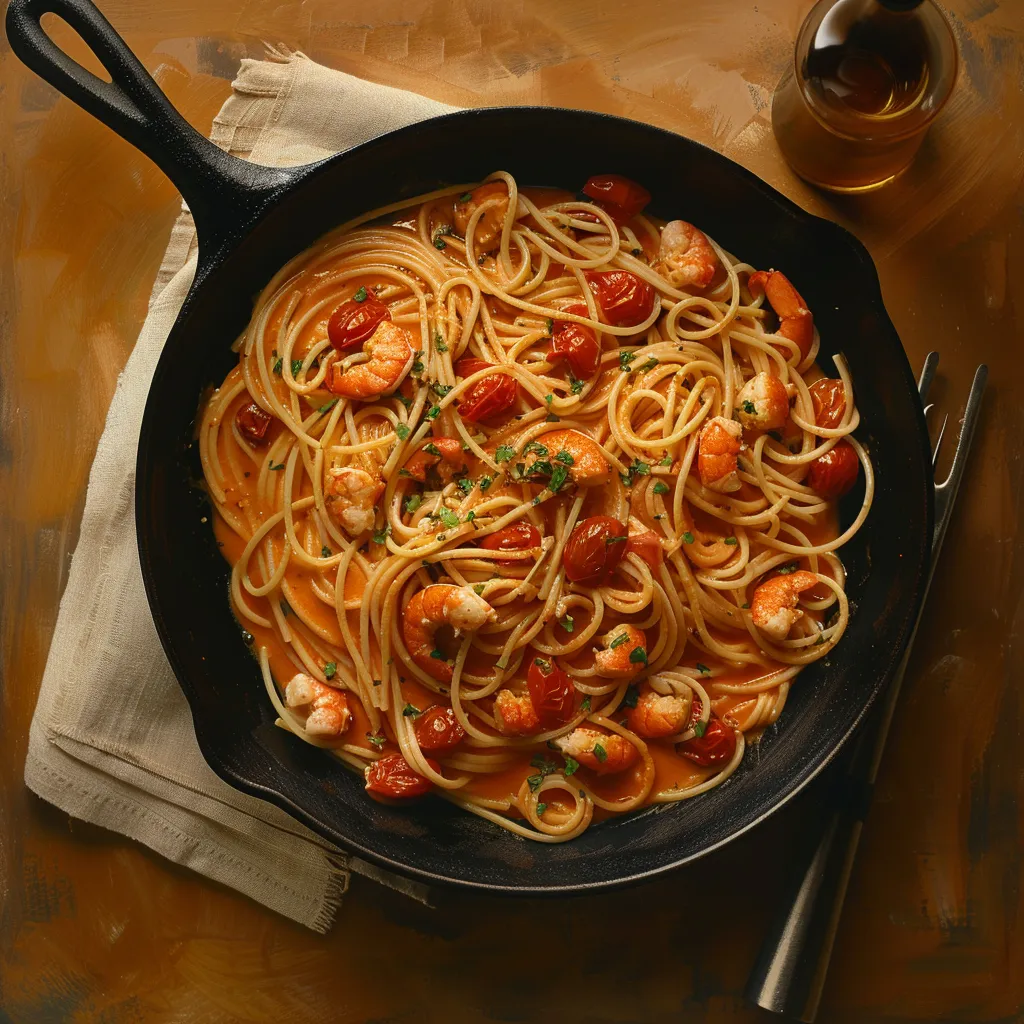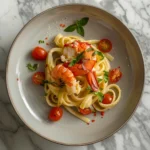Chicken Quinoa Soup stands as a testament to a meal that perfectly balances delectable flavors with nutritional benefits, promising to delight your palate and nourish your body.
What Makes This Recipe Good?
Its pleasant warmth and harmonious taste mix without compromising health make this soup famous. Why chicken quinoa soup is special:
- It’s incredibly nutritious, combining lean protein from chicken and high-fiber quinoa.
- The recipe is versatile, allowing for various vegetables and spices to be added, tailoring it to personal tastes and seasonal ingredients.
- Chicken Quinoa Soup can be a staple for those looking to maintain a healthy diet without spending hours in the kitchen.
Benefits of Chicken Quinoa Soup
The benefits of chicken quinoa soup extend far beyond its delicious taste. Here are several reasons why this soup is a fantastic addition to your diet:
Nutrient-Rich: Quinoa is known for its high nutrient content, including all nine essential amino acids, making it a complete protein source. This is particularly beneficial for vegetarians and vegans when combined with other protein sources. Chicken, on the other hand, is a great source of lean protein that helps in muscle repair and growth. Discover more about the best seasoning for chicken breast to enhance your soup.
High in Fiber: Quinoa is also high in fiber, which aids in digestion and helps you feel full longer, supporting weight management.
Boosts Immune System: Chicken broth is famous for its immune-boosting properties. The soup can help reduce inflammation and promote a healthy gut.
Versatile and Customizable: This soup can be easily adapted to suit various dietary needs and preferences. It can be made gluten-free, dairy-free, or even vegetarian by substituting chicken with a plant-based protein source.
Overview of Key Ingredients
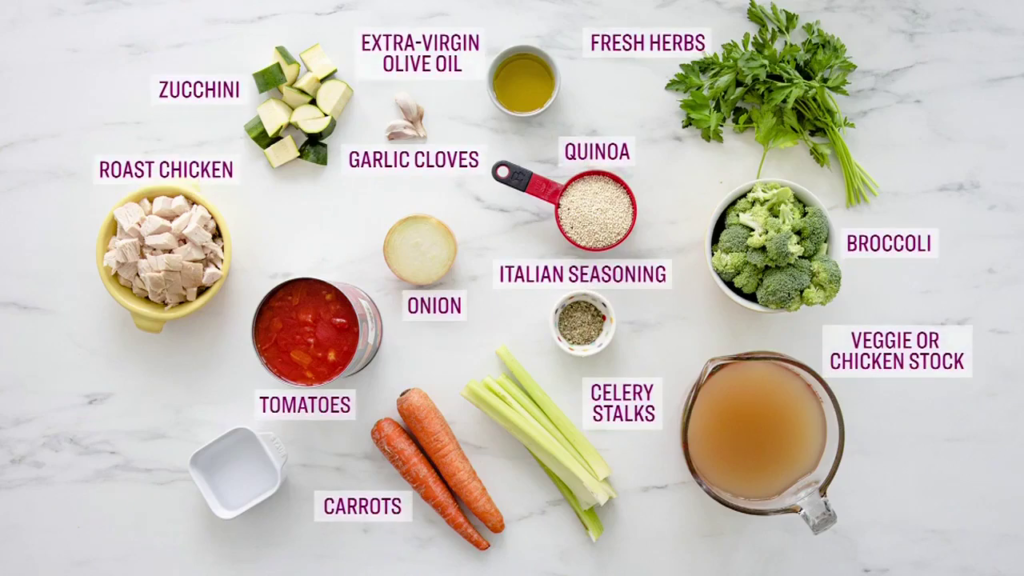
The beauty of chicken quinoa soup lies in its simplicity and the wholesomeness of its ingredients. Here’s a quick overview:
Chicken: Lean and tender pieces of chicken breast or thigh add a rich protein source to the soup.
Quinoa: is a gluten-free grain that is a complete protein, providing all essential amino acids.
Vegetables: A colorful mix of vegetables like carrots, celery, onions, and kale contributes vitamins, minerals, and fiber.
Broth: A base of chicken or vegetable broth brings all the ingredients together, infusing the soup with flavor and nutrients.
Herbs and Spices: Garlic, bay leaves, thyme, and parsley add depth and aroma to the soup, making it not only a treat for the palate but also a feast for the senses.
For a creative twist on traditional recipes, consider exploring our Mediterranean Quinoa Power Bowl, an excellent dish for those who love quinoa.
Chef’s Tips for Perfect Chicken Quinoa Soup
To make the best chicken quinoa soup, follow these easy but useful tips:
-
Start with a Sauté: First, sauté your onions, garlic, and other aromatic vegetables in a bit of oil before adding the broth. This step helps to release their flavors into the soup, creating a richer base.
-
Toast the Quinoa: Before adding it to the soup, toast the quinoa in a dry skillet until it starts to pop. This improves its nutty flavor and can help the soup maintain a better texture.
-
Use Fresh Herbs: At the end of your cooking, incorporate fresh herbs such as thyme, parsley, or cilantro. Fresh herbs add a burst of flavor that dried herbs can’t match.
-
Adjust the cooking time: Cook the quinoa in the soup just until it’s tender. Keep a watch on it after adding it to the pot, as overcooking can make it mushy.
-
Balance the Flavors: Taste as you go and adjust the seasoning with salt, pepper, and acid, such as lemon juice or a splash of white wine vinegar. This helps to balance the flavors and brighten the overall taste of the soup.
-
Add a Touch of Creaminess: For a creamier texture, stir in a little coconut milk or cream during the last few minutes of cooking. This adds a silky richness without overwhelming the other flavors.
-
Garnish Wisely: Garnish with something that will complement the soup’s flavors, such as a sprinkle of grated Parmesan, a swirl of olive oil, or fresh lemon zest.
-
Slow Cook for Depth: If you have time, let the soup simmer on low heat for an hour or so after cooking. This slow cooking method allows all the flavors to meld together beautifully.
FAQs on Chicken Quinoa Soup
What are the health benefits of chicken quinoa soup?
Chicken quinoa soup is packed with nutrients beneficial for overall health. Quinoa is a complete protein, containing all nine essential amino acids, making it excellent for muscle growth and repair. It’s also high in fiber, which aids digestion and helps maintain a healthy weight. Chicken is a lean protein source, supporting muscle development and contributing to a feeling of fullness. The vegetables in the soup provide vitamins and minerals, boosting the immune system and promoting overall well-being.
Can I make chicken quinoa soup in a slow cooker?
Yes, you can easily adapt this recipe for a slow cooker. Add all ingredients except the kale to the slow cooker, and cook on low for 6-7 hours or on high for 3-4 hours. About 30 minutes before serving, add the kale and allow it to wilt. If you’re using chicken breasts, remove them, shred, and return the shredded chicken to the slow cooker before serving.
How can I make this soup vegan?
To make vegan chicken quinoa soup, substitute the chicken for a plant-based protein like chickpeas, lentils, or cubed tofu. Use vegetable broth instead of chicken broth. You can also add more vegetables or vegan meat substitutes to enhance the protein content without using animal products.
What can I serve with chicken quinoa soup?
Chicken quinoa soup is hearty and can be served as a main dish. For a complete meal, pair it with a side salad, crusty bread for dipping, or a light sandwich. You can also serve it with a sprinkle of grated cheese or a dollop of yogurt or sour cream on top for extra flavor.
Customizing Your Chicken Quinoa Soup
Everyone has their own unique taste preferences, but here are a few ways to make Chicken Quinoa Soup your own:
- For a vegetarian version, substitute chicken with chickpeas or tofu.
- Spice It Up: Add chili flakes or cayenne pepper for a spicy kick.
- Extra Veggies: Include spinach or kale for additional nutrients.
Explore more delicious chicken dishes like this with our Hawaiian Chicken in a Crock Pot.
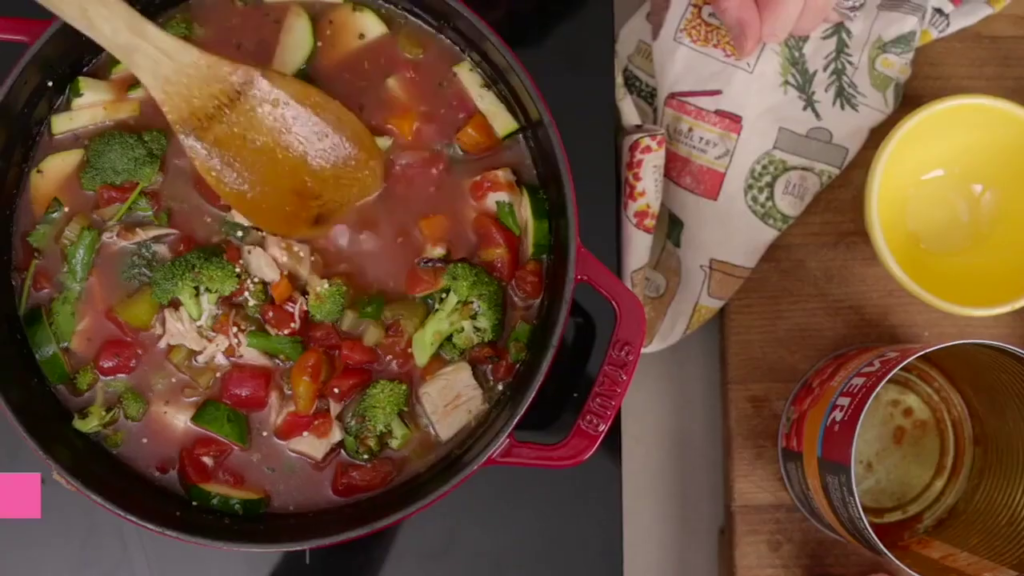
Ready to try making this wonderful Chicken Quinoa Soup at home? Gather your ingredients and follow these tips for a delightful and healthy meal. Don’t forget to check back for more tasty recipes and healthy eating tips!
PrintChicken Quinoa Soup
- Prep Time: 10 minutes
- Cook Time: 20 minutes
- Total Time: 30 minutes
- Yield: 4-6
- Category: Soup
- Method: Stovetop
- Cuisine: International
- Diet: Gluten Free
Ingredients
- 1 tablespoon olive oil
- 1 medium onion, diced
- 2 garlic cloves, minced
- 2 medium carrots, peeled and diced
- 2 celery stalks, diced
- 1 pound chicken breast, cut into bite-sized pieces (substitute with chickpeas or tofu for a vegan version)
- 1 cup quinoa, rinsed
- 6 cups chicken or vegetable broth
- 1 teaspoon dried thyme
- 1 bay leaf
- Salt and pepper to taste
- 2 cups kale, stems removed and leaves chopped
- Fresh parsley, chopped for garnish
Instructions
-
Sauté Vegetables: In a large pot, heat olive oil over medium heat. Add onion, garlic, carrots, and celery. Sauté until the vegetables are softened, about 5 minutes.
-
Cook Chicken: Add the chicken pieces to the pot and cook until they are no longer pink on the outside, about 5 minutes. (Skip this step for a vegan version and proceed with adding broth and quinoa.)
-
Add Quinoa and Broth: Stir in the quinoa, chicken or vegetable broth, thyme, and bay leaf. Season with salt and pepper. Bring the mixture to a boil, then reduce heat to low, cover, and simmer for 15 minutes.
-
Add Kale: Add the chopped kale to the pot and continue to simmer until the kale is wilted and the quinoa is cooked through, about 5 minutes.
-
Serve: Remove the bay leaf. Taste and adjust seasoning if necessary. Serve hot, garnished with fresh parsley.
Notes
- Rinse Quinoa: Always rinse quinoa under cold water in a fine-mesh strainer to remove its natural coating, saponin, which can make it taste bitter or soapy.
- Customization: Feel free to add other vegetables like mushrooms, bell peppers, or spinach to the soup for added nutrition and flavor.
- Storage: Store leftovers in an airtight container in the refrigerator for up to 3 days or freeze for up to 3 months. Reheat gently on the stove or in the microwave, adding a little broth or water if the soup has thickened.
Serving Suggestions
Serve this hearty soup as a standalone meal or pair it with a crusty piece of bread for dipping. For a complete meal, accompany it with a simple green salad dressed with olive oil and lemon juice.

